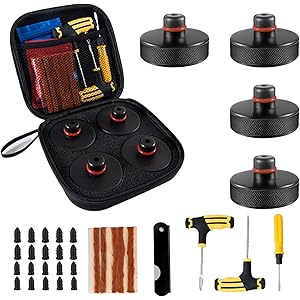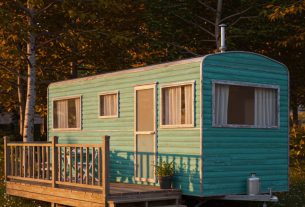When I first moved into my mobile home, I was thrilled with the freedom and flexibility it offered. However, I quickly realized that accessibility was a significant concern, especially when it came to navigating the steps leading up to my front door. Over time, I learned that building mobile home steps is not just about aesthetics; it’s about ensuring safety and improving the quality of life for everyone who enters your home. In this article, I’ll share my journey, insights, and expert tips to help you create functional and beautiful mobile home steps that enhance accessibility. Let’s get started!
Understanding the Importance of Accessibility
Accessibility is crucial for everyone, but it becomes even more essential for individuals with mobility challenges, such as the elderly or those with disabilities. According to the World Health Organization, over a billion people live with some form of disability, and this number is expected to rise as the global population ages. Making homes accessible is not just a legal obligation but a moral one that can significantly improve the quality of life for many.
- Enhances independence
- Reduces the risk of falls and injuries
- Increases home value
- Encourages social interaction
- Improves overall quality of life
With these benefits in mind, let’s explore how to build mobile home steps that are not only safe but also stylish and functional.
Assessing Your Needs
Before diving into the construction process, it’s essential to assess your specific needs. Consider the following factors:
- Who will use the steps? Are they for children, elderly family members, or individuals with disabilities?
- What is the height of your mobile home? This will determine the number of steps and their height.
- What materials do you prefer? Different materials offer various benefits, from cost to aesthetic appeal.
- What is your budget? Knowing how much you can invest will help narrow down your options.
Once you have a clear understanding of your requirements, you can move forward with designing your steps.
Designing Safe and Functional Mobile Home Steps
Safety is paramount when constructing steps. Here are some design guidelines to keep in mind:
Step Height and Depth
The height and depth of each step play a significant role in safety. The ideal height for each step should be between 4 to 7 inches, while the depth should be at least 11 inches. This combination allows for a comfortable and secure footing.
Handrails
Handrails are essential for providing support, especially for those with mobility issues. Here are some tips for handrail installation:
- Install handrails on both sides of the steps.
- Ensure handrails are 34 to 38 inches high.
- Choose materials that are easy to grip, such as wood or textured metal.
Non-Slip Surfaces
To prevent slips and falls, consider the following non-slip surface options:
- Textured paint
- Anti-slip strips
- Rubber mats
Choosing the Right Materials
The materials you choose for your mobile home steps will affect both durability and aesthetics. Here are some popular options:
Wood
Wood is a classic choice that offers warmth and charm. However, it requires regular maintenance to prevent rot and weathering. I recommend using pressure-treated wood for longevity.
Composite Materials
Composite materials, made from a blend of wood fibers and plastic, are low-maintenance and resistant to rot. They come in various colors and styles, making them an attractive option.
Metal
Metal steps are incredibly durable and can support substantial weight. They often come in prefabricated designs, making installation easier. However, they can become hot in direct sunlight, so consider this factor when choosing your materials.
Building Your Mobile Home Steps: A Step-by-Step Guide
Now that we have covered the design and materials, let’s delve into the step-by-step process of building your mobile home steps.
Step 1: Gather Your Materials and Tools
Before starting, ensure you have all the necessary materials and tools on hand. Here’s a list to help you get started:
- Pressure-treated wood or your chosen material
- Concrete mix (for the base)
- Handrails
- Non-slip surface treatment
- Measuring tape
- Level
- Saw
- Drill
- Screws and nails
Step 2: Measure and Mark
Use your measuring tape to determine the height from the ground to your mobile home’s entryway. Mark the height on the ground to help visualize your steps.
Step 3: Build the Frame
Construct a rectangular frame using your chosen material. Ensure it is sturdy enough to support the weight of users. I found that using 2x4s for the frame works well.
Step 4: Create the Steps
Cut the boards to the appropriate height and depth for each step. Attach them securely to the frame, ensuring they are level.
Step 5: Install Handrails
Attach the handrails on both sides of the steps. Make sure they are securely fastened and at the correct height for easy gripping.
Step 6: Apply Non-Slip Treatment
Once the steps are built, apply your chosen non-slip surface treatment to enhance safety.
Step 7: Final Inspection
Before using your new steps, do a thorough inspection. Check for any loose boards, unstable railings, or rough edges that might pose a risk.
Case Studies: Successful Mobile Home Step Projects
To illustrate the impact of well-designed mobile home steps, let me share a couple of case studies from my community.
Case Study 1: The Johnson Family
The Johnsons were struggling with accessibility for their elderly grandmother, who faced challenges climbing the existing steep steps. After assessing their needs, they decided to reconfigure their steps into a gentler slope with wider, deeper treads. The installation of sturdy handrails made all the difference. Their grandmother now visits more frequently, and the family enjoys her company without worry.
Case Study 2: The Smiths’ DIY Project
The Smiths took on a DIY project to enhance their mobile home steps. They opted for composite materials for better durability and minimal maintenance. By adding decorative lights along the sides, they not only improved visibility but also created a welcoming entrance to their home. Their project inspired many neighbors to undertake similar renovations.
Cost Considerations
Building mobile home steps can vary in cost depending on materials and design. Here’s a rough breakdown:
- Wood Steps: $200 – $500
- Composite Steps: $300 – $700
- Metal Steps: $400 – $800
- DIY vs. Professional Installation: DIY projects can save money, but hiring professionals may ensure better quality and safety.
Remember that investing in quality materials and proper construction can save you money in the long run by reducing maintenance and potential accidents.
Frequently Asked Questions (FAQ)
1. How long does it take to build mobile home steps?
The time required depends on your skills and the complexity of the design. A simple set of steps can be built in a weekend, while more intricate designs may take longer.
2. Do I need a permit to build mobile home steps?
Permit requirements vary by location. It’s essential to check with your local building department to ensure compliance with zoning laws and safety regulations.
3. Can I modify existing steps for better accessibility?
Yes! Many people successfully modify their current steps by adding handrails, non-slip surfaces, or widening the steps. Always prioritize safety and stability.
4. What are the best materials for outdoor steps?
Durability is key for outdoor steps. Pressure-treated wood, composite materials, and metals are popular choices due to their weather resistance.
Conclusion
Building mobile home steps is an essential project that can significantly enhance accessibility, safety, and overall quality of life. By understanding your needs, designing with safety in mind, and using the right materials, you can create a welcoming entrance that meets the requirements of all users. Remember, it’s not just about function; it’s about making your home a place where everyone feels comfortable and valued.
If you found this article helpful, I encourage you to share it with friends and family. For more tips and insights on home improvement, sign up for our newsletter and stay updated on the latest trends and DIY guides. Together, we can make homes safer and more accessible for everyone!
Tesla Jack Pads Lifting Jack Pad for Tesla Model 3/Y/S/X Tesla Pucks Accessories with Tire Repair Tools Kit for Tesla Vehicles 2016 to 2026,4 Pucks with Storage Case
$16.99 (as of November 15, 2025 07:52 GMT -03:00 - More infoProduct prices and availability are accurate as of the date/time indicated and are subject to change. Any price and availability information displayed on [relevant Amazon Site(s), as applicable] at the time of purchase will apply to the purchase of this product.)
Sign up for our newsletter and stay up to date with exclusive news
that can transform your routine!





